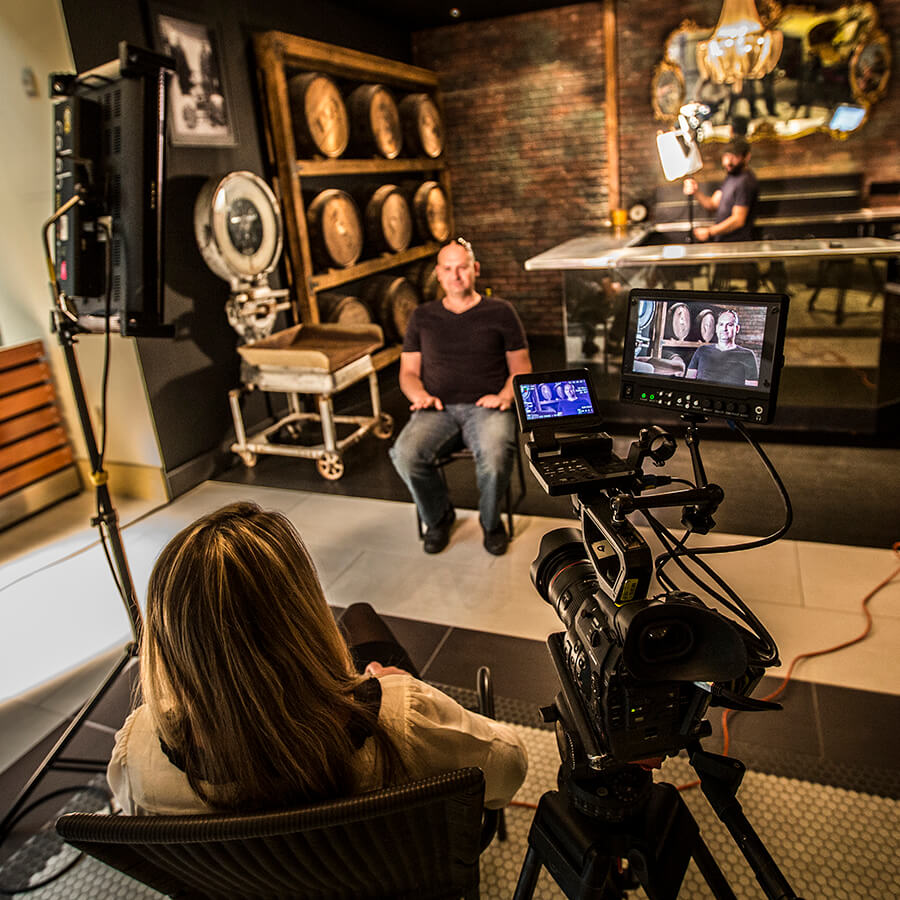Revealing the Trick Variances Between Commercial and Corporate Videos: An In-depth Contrast
In the realm of aesthetic narration, the difference between industrial and business videos holds significant weight fit the narrative and function behind each manufacturing. While both function as powerful tools in the marketing toolbox, the nuances in between the 2 genres are frequently forgotten. Understanding the refined yet critical differences in objective, design, target market, branding focus, and production methods can be the key to crafting reliable and impactful video material. As we explore the intricate information that set company and industrial video clips apart, a much deeper understanding of their special roles and applications unfolds, clarifying the calculated selections that drive successful aesthetic projects (difference between commercial and corporate video).
Function Differences
In the realm of video production, a fundamental differentiation between business and company video clips lies in their designated target markets and distinctive objectives. Industrial videos are mostly focused on promoting a product, service, or brand to consumers with the goal of driving sales and producing earnings. These video clips typically utilize innovative storytelling, sob story, and influential messaging to mesmerize audiences and compel them to do something about it, such as purchasing or going to a website.
On the various other hand, business videos are created for inner or outside stakeholders, such as staff members, financiers, or business companions, with the objective of conveying details, building trust fund, and boosting the reputation of the organization. These video clips may include firm overviews, training videos, executive messages, or occasion insurance coverage, emphasizing reputation, professionalism, and transparency.
Understanding the unique purposes of company and industrial videos is important for video clip businesses, marketing experts, and producers to create material that successfully reverberates with their target audience and attains the wanted purposes. By customizing the messaging, tone, and style of the video clip to suit the certain goals and audience choices, firms can optimize the impact and effectiveness of their video advertising and marketing initiatives.
Design Differences
With the distinct functions of company and industrial videos developed, the emphasis now shifts towards examining the design differences that differentiate these two forms of video production. Industrial video clips usually focus on creative thinking, amusement, and psychological involvement to catch the audience's attention promptly. These videos regularly employ dynamic visuals, vibrant colors, catchy songs, and impactful storytelling strategies to create a memorable and influential checking out experience. On the other hand, business video clips lean towards an extra expert and informational tone, intending to convey certain messages about the business's items, values, or solutions. The design of corporate video clips is usually more simple, counting on clear and concise interaction, professional narration, and an official visual to establish reliability and depend on with the viewers. While commercial video clips make every effort to stimulate sensations and stimulate interest, business video clips focus on providing pertinent information in a reliable and straight fashion, customized to the target audience's requirements and expectations. These contrasting designs offer the distinct objectives of each video style, dealing with company website their desired purposes in the business and business worlds.

Target Market Varied
Customizing web content to fit the diverse demographics and choices of the target audience is an essential aspect of producing reliable commercial and business video clips. In the realm of business videos, the target audience is normally customers or potential customers.
On the other hand, business video clips provide to an extra particular target market, consisting of staff members, partners, or stakeholders. These video clips are designed to convey info regarding the company's worths, society, success, or internal processes. Company videos frequently concentrate on building brand reputation, promoting depend on, and supplying key messages to a targeted team. They might utilize this post an extra official tone, informative content, and a refined visual to align with the assumptions of a company audience. Understanding these differences in target market preferences is essential for crafting impactful and pertinent video clip web content in the business and company rounds.

Branding Emphasis
Effectively showcasing brand name identification is a pivotal element of identifying in between industrial and corporate videos. In business video clips, the branding focus frequently leans in the direction of promoting products or solutions to a broader audience.
On the various other hand, corporate video clips put a better focus on building brand name track record and developing reliability within a certain sector or market. These video clips are created to display the worths, society, and proficiency of the business to workers, stakeholders, and investors. Corporate video clips usually incorporate narration elements to attach and humanize the brand on a much deeper level with the audience.
While both commercial and company video clips prioritize brand identification, the way in which branding is stressed sets them apart in terms of their objectives and target audience. By comprehending these distinctions, services can properly customize their video clip web content to attain their specific branding objectives.
Manufacturing Distinctions
In the world of video clip production, the distinction between corporate and industrial videos prolongs beyond branding focus to include notable distinctions in manufacturing strategies. The manufacturing of business video clips emphasizes depicting the company's values, services, or products in a straightforward fashion to construct trust fund and integrity with stakeholders.
From a technical perspective, commercial videos may entail extra elaborate collections, aesthetic results, and motion picture methods to create a memorable and visually stunning piece. On the various other hand, corporate video clips have a tendency to be extra straightforward, using clean and expert looks to align with the company's brand picture. Furthermore, commercial video clips may have shorter manufacturing timelines and higher budget plans to satisfy the demands of attention-grabbing advertising and marketing, while corporate video clips usually adhere to a more systematic and organized production process to make sure precision and placement with the company's purposes.

Final Thought
In verdict, business and corporate videos serve distinct objectives and target various audiences. By recognizing these differences, firms can customize their videos to better reverberate with their certain target audience and accomplish their desired objectives.
In the world of video clip production, a fundamental differentiation in between company and industrial videos exists in their desired audiences and distinct objectives.With the unique objectives of industrial and corporate video clips established, the emphasis currently moves towards examining the style variations that set apart these two kinds difference between commercial and corporate video of video clip production (video production). While commercial videos make every effort to evoke sensations and spark interest, business video clips focus on supplying relevant info in a straight and effective fashion, tailored to the target audience's requirements and assumptions.In the world of video clip creation, the distinction between corporate and commercial videos prolongs past branding focus to encompass noteworthy distinctions in manufacturing approaches. Furthermore, industrial video clips might have much shorter manufacturing timelines and higher budget plans to satisfy the needs of attention-grabbing marketing, while company videos commonly follow a much more structured and systematic manufacturing procedure to make certain precision and alignment with the business's purposes